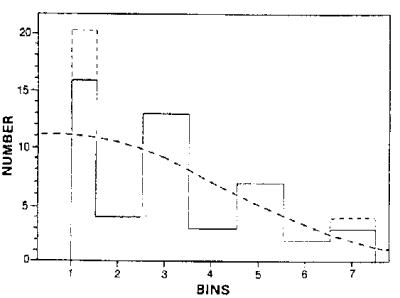 |
Science Frontiers ONLINE No. 50: Mar-Apr 1987 |
|
|
Quantized Galaxy Redshifts
"The history of science relates many examples where the conventional view ultimately was proved wrong."
Tifft and Cocke begin their article with this sentence. Wisely, they followed with the tale of how vehemently the quantization of the atom was resisted earlier in this century. They were wise because without such a reminder to be open-minded, many astronomers would automatically toss their article in the wastebasket! In fact, when Tifft's first paper on redshift quantization appeared in the Astrophysical Journal, the Editor felt constrained to add a note to the effect that the referees:
"Neither could find obvious errors with the analysis nor felt that they could enthusiastically endorse publication."
Even today, after much more evidence for redshift quantization has accumulated, scientific resistance to the idea is extreme. We shall now see what all this fuss is about.
Tifft first became suspicious that the redshifts of galaxies might be quantized; that is, take on discrete values; when he found that galaxies in the same clusters possessed redshifts that were related to the shapes of the galaxies. The obvious inference was that the redshifts were at least partly dependent upon the galaxy itself rather than entirely upon the galaxy's speed of recession (or distance) from the earth. Then, he found more suggestions of quantization. The redshifts of pairs of galaxies differed by quantized amounts (see figure). More evidence exists for galactic quantization, but this should give the reader a feeling for the conceptual disaster waiting on the wings of astronomy.
Can galaxies, like atoms and mole cules, posses quantized states? And do the findings of Tifft and Cocke undermine the redshift-distance relationship? The answer might be YES; and then all of astronomy and our entire view of the universe and its history would have to be reformulated.
(Tifft, William G., and Cocke, W. John; "Quantized Galaxy Redshifts," Sky and Telescope, 73:19, 1987.)
 | Redshift differences for double galaxies. Instead of following the expected distribution (dotted line), they tend to fall into bins separated by 72-km/sec. |